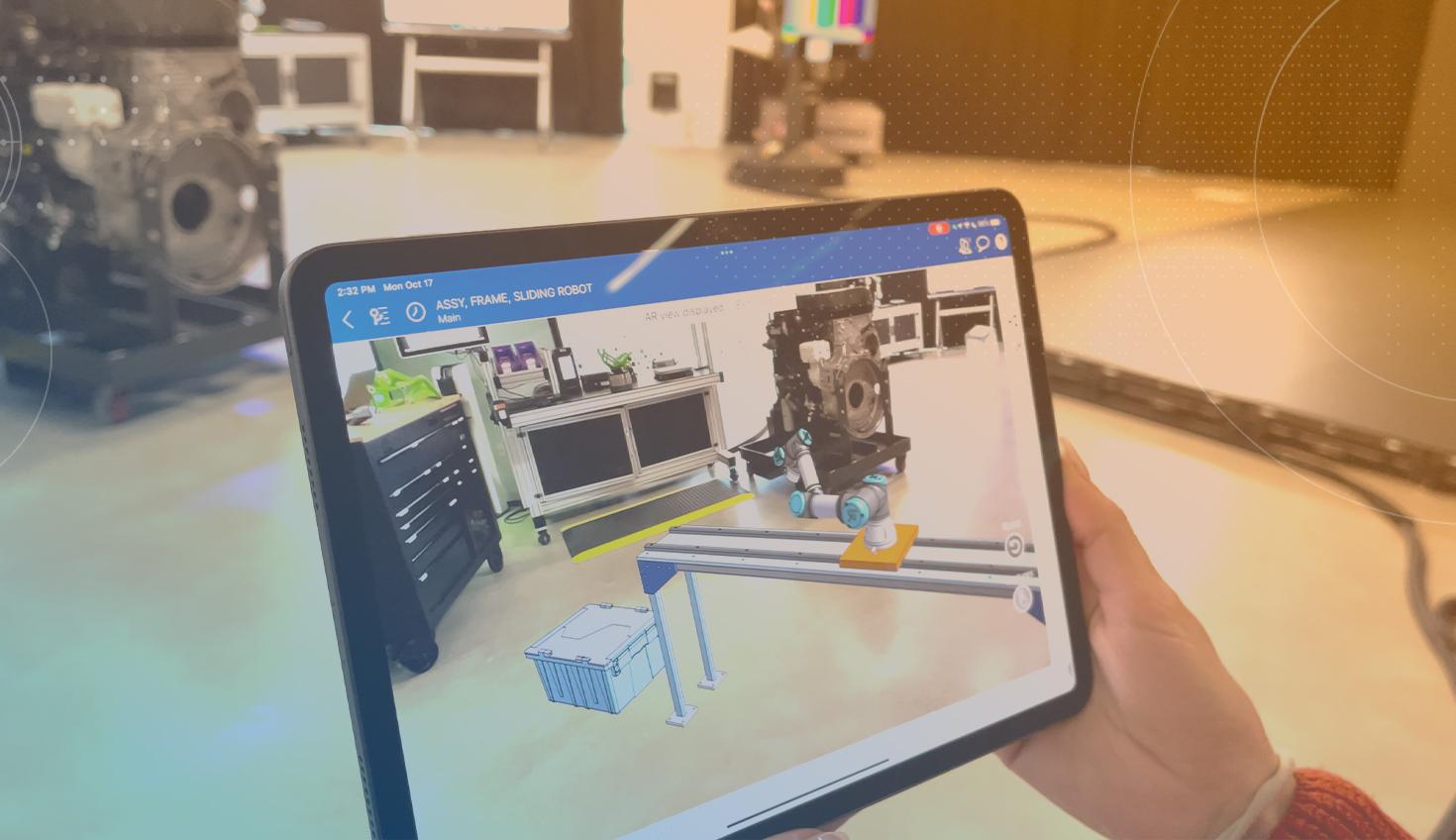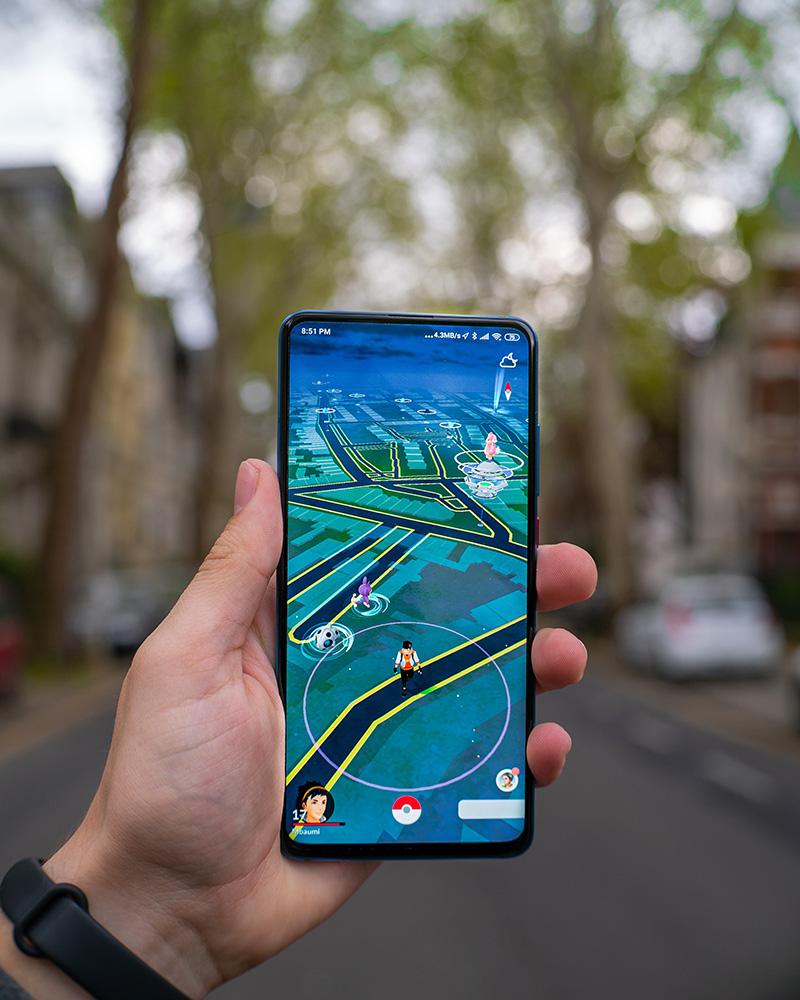
5:04
Goodbye screens, hello AR.
With all the hubbub around the release of Apple Vision Pro – billed as Apple’s first spatial computer – there’s been an increased talk about augmented reality’s role in the success of industrial enterprises. But how can the technology be put into practical use alongside other product development tools like CAD software?
Vuforia’s General Manager JJ Lechleiter shares how AR is transforming work all along the production line – with mainstream devices or an AR headset.
What Is Augmented Reality?
Augmented reality is a technology that overlays digital information in context with the physical world.
Pokémon GO is likely the most well-known use of augmented reality and shows the possibilities of merging the digital and the real world.

The smartphone game uses AR to overlay Pokémons into the view of the physical world through the screen of the user's phone. This way, users can “find” digital Pokémon and catch them while exploring the real world.
The game’s popularity underscores what’s so compelling about AR – the ability to better connect the real world with the digital.
Compounded with ever-improving headsets like the Microsoft HoloLens or the new Apple Vision Pro, AR can offer manufacturers and product development teams better ways to design.
Leading the way in this space is Vuforia, a PTC Technology, that helps businesses bring AR technology to the manufacturing floor.
What Are the Advantages of Augmented Reality?
AR has benefits that can be applied to a variety of use cases – from product planning to manufacturing, and to training and service. It can help designers and engineers create and make decisions with a full picture that incorporates real-world information with digital tools.
Instead of dragging a three-ring binder to the manufacturing floor and flipping through pages of information, workers can utilize digital information right at their fingertips in an instant.
“Presenting design and product data in 3D, showing critical information in context with the physical world makes work much easier, that yields tremendous value,” Vuforia’s General Manager JJ Lechleiter explains.
What Is Augmented Reality Used for?
Lechleiter says that businesses have found uses for AR throughout the value chain, from engineering through manufacturing and service, and out to the customer for operations.
Especially in manufacturing, AR is making an impact by bridging the divide between digital design and the product in the real world. For example, a service technician can use AR to ensure the physical product adheres to the digital design in real time.
“Augmented reality allows you to visualize products in a more realistic way and to collaborate on your designs with your teams in real time. It helps product designers to make better decisions,” Lechleiter explains.
The Power of CAD and Augmented Reality
Using parametric CAD with AR helps engineers and designers develop products more efficiently and accurately. The real-time use of CAD information allows users to see how the design would function in the real world with the use of AR solutions like Vuforia.
“CAD and product information are the foundation for augmented reality at scale. Leveraging existing product data from CAD and other systems through PTC’s integrations and SaaS solutions increases the value for customers,” Lechleiter says.
Through CAD, engineers can have confidence in the product. With the addition of AR, users can get more value out of building with parametric modeling tools.
AR that is integrated with CAD and PLM (product lifecycle management) software streamlines product development workflows and helps frontline workers become more efficient. In fact, businesses that integrate AR to CAD and PLM systems report an 81% faster development time, from ideation to testing, according to research conducted by Aberdeen.
How Are Businesses Using Augmented Reality?
Like the Pokémon GO example, many businesses are leveraging AR technology with iPads, smartphones, and other mobile devices that have a screen and a camera. These tools are useful and easily accessible for many companies of all sizes.
While mobile devices can suffice, businesses can also use digital eyewear, as hinted at earlier. Digital eyewear, like Microsoft's HoloLens, allows the user to see operational characteristics, speeds, feeds, temperatures, and pressure, and also allows users to interact with any related items in their field of view. This is especially helpful for training sessions or during a design review.
The Manufacturing Use Case for Augmented Reality
On the manufacturing floor, workers can see the digital design and its physical manifestation in the same view – giving them the opportunity to compare and make changes wherever needed.
“It not only helps workers be more productive, it also helps them to do their jobs easier in a highly complex environment,” Lechleiter says of this use case. “Augmented reality can be their digital guide providing relevant product information at the right time, in the right place.”
For example, Howden, a manufacturer of air and gas handling equipment, utilizes Vuforia technology to prevent failures and downtime, improve machine maintenance and efficiency, save time and costs, and improve workforce efficiency.
With the power of Vuforia, Howden was able to create immersive mixed-reality experiences for their customers and leverage existing 3D models created in CAD. With the AR experience, Howden customers could see an enhanced view of the equipment – including the ability to visualize what’s going on inside the machine.
The team was also able to create an AR experience for employees that helped speed up onboarding and enable safer and more productive workers, which makes another new use case for AR in the industrial space.
Try it Now: Onshape’s AR View
For iPhone and iPad users, the Onshape App has a built-in AR viewing of live designs within Onshape Part Studios and Assemblies. To use it, users simply enable the AR View mode in the view pull-down menu or via the view-only heads-up toolbar.
Powered by Vuforia, there’s no need to re-export CAD models to AR formats if there’s a design change. If your design updates, so does the view on-screen, saving time and ensuring accuracy.
Want to try it out for yourself? Sign up for an Onshape Professional trial plan today!
Try Onshape Today
Head to our sign-up page to choose the right CAD plan for you and your team.
Latest Content

- Case Study
- Industrial Equipment & Machine Design
Reframe Systems: Transforming Homebuilding with Digital Automation and Cloud-Native Onshape
09.25.2025 learn more
- Blog
- Aviation, Aerospace & Defense
- Branching & Merging
- Custom Features
- Learning Center
- Onshape Government
Why Aerospace & Defense Teams Choose Onshape for Product Development
12.18.2025 learn more
- Blog
- Evaluating Onshape
Cloud-Native CAD 2025 Wins: Revenue Growth, Real-Time Collaboration, Unified CAD-CAM
12.17.2025 learn more
- Blog
- Becoming an Expert
- Assemblies
- Simulation
Mastering Kinematics: A Deeper Dive into Onshape Assemblies, Mates, and Simulation
12.11.2025 learn more



